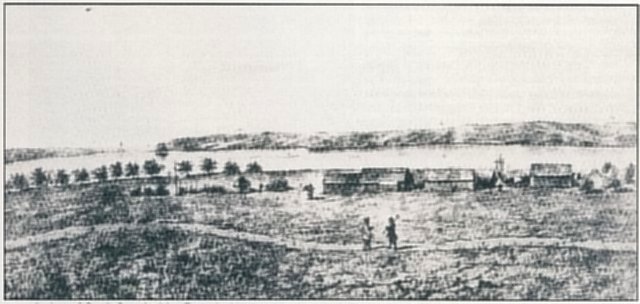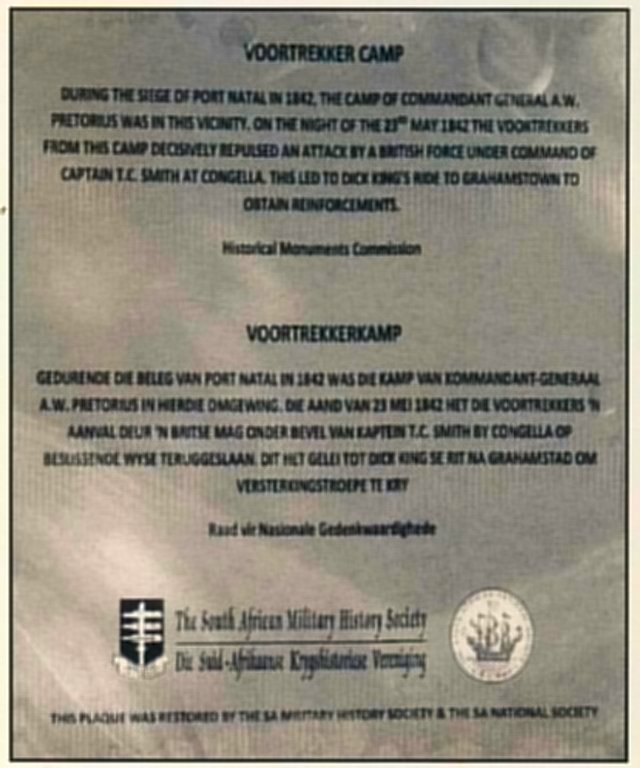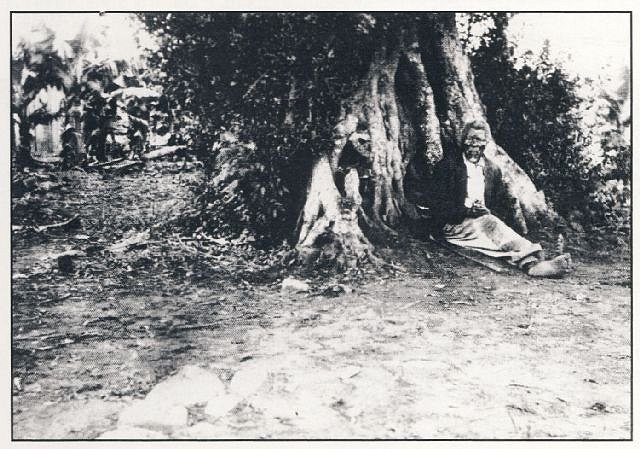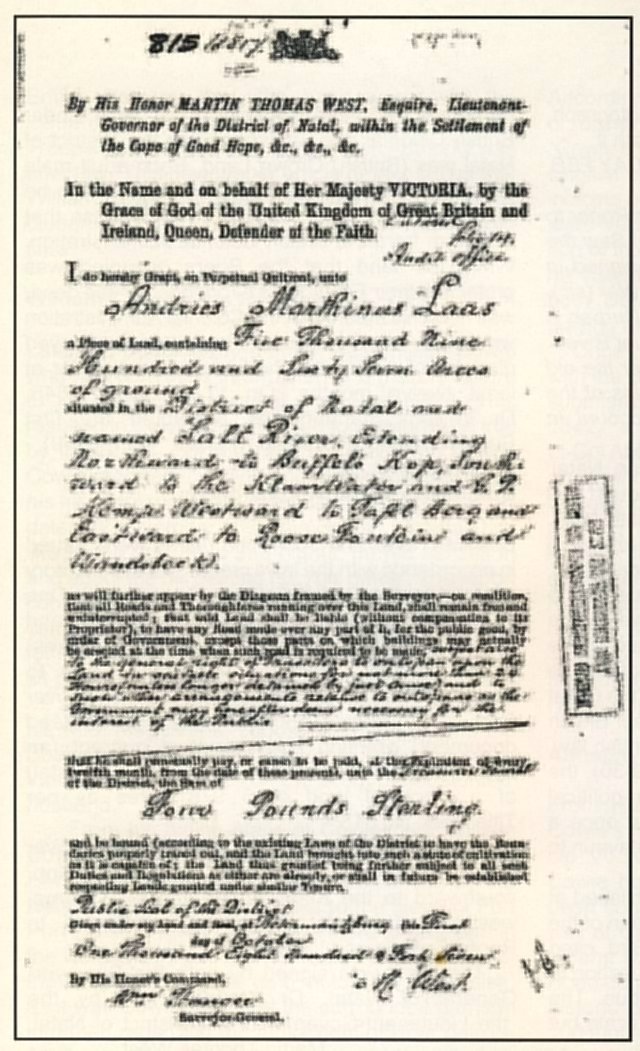

 The South African
The South African
Preamble
This article is a continuation of the author’s earlier article titled ‘The 175th anniversary of Durban’s Battle of Congella’ which appeared in the Military History Journal, Volume 18, No 1, December 2017, pp38-41).
Introduction
In Durban’s famous Battle of Congella, which took place on 23/24 May 1842, the Afrikaner Boers of the Republiek van Natal defeated the resident British troops from the well-established Cape Colony. At that time, the Governor of the Cape Colony viewed the so-called Republiek van Natal as the District of Natal, within the Settlement of the Cape of Good Hope and subject to Cape Colony rule.
The defeated British troops, under Captain Thomas Charlton Smith (1794–1883), were forced to retreat to Fort Port Natal (nowadays known as the Old Fort, Durban) where he and his men were promptly besieged by the Boers. It was here that Durban took root.
Military prowess was of paramount importance to the Boers (Saunders, 1992, p116). The Boers, under the command of Commandant-General Andries W Pretorius (1798–1853), had its hoofkwartier (headquarters) at the nearby laager camp of ‘Kongela’ (Congella). A sketch of Cmdt-Gen Pretorius’ Voortekker camp at Congella is reflected below.

A view of Cmdt Gen Andries Pretorius’ Voortrekker camp at Congella in 1842.
(Source: M Adulphe Delagorgue, 1847, Voyage dans L’Afrique Australe,
Local History Museums’ Collection, Durban, KwaZulu-Natal).
Dick King’s heroic 970-kilometre horseback ride from Port Natal to Grahamstown saw the summoning of relief for the besieged British garrison at Fort Port Natal. On 24 June 1842, the first reinforcements arrived in the Bay of Natal (Durban) from Algoa Bay (Port Elizabeth) aboard the schooner Conch. These British troop reinforcements were in time to save Capt Smith’s garrison from imminent surrender or starvation.
On the next day, 25 June, the British frigate HMS Southampton, under the command of Capt Josias Ogle, anchored outside the sandbar at the entrance to the Bay of Natal. She drew too much water to cross the sand bar, but she had 50 cannon onboard and five companies of the 25th Regiment of Foot (King’s Own Borderers) under the command of Lieutenant-Colonel Abraham Josias Cloete. The Boers realised they were powerless to stop the British troops landing, so they hastily retreated to Congella, where they and the other Boers gathered their belongings before abandoning their settlement. Russell (1911, p190) notes it was ‘… reported that Congella was being deserted by the Dutch farmers’.
A (present-day) restored plaque by the South African Military History Society can be seen in Congella Park, Umbilo. The English text appearing on this plaque states:
VOORTREKKER CAMP
DURING THE SIEGE OF PORT NATAL IN 1842,
THE CAMP OF COMMANDANT GENERAL A W
PRETORIUS WAS IN THIS VICINITY. ON THE
NIGHT OF THE 23RD MAY 1842 THE
VOORTREKKERS FROM THIS CAMP
DECISIVELY REPULSED AN ATTACK BY A
BRITISH GARRISON FORCE UNDER
COMMAND OF CAPTAIN T C SMITH AT
CONGELLA. THIS LED TO DICK KING’S RIDE
TO GRAHAMSTOWN TO OBTAIN
REINFORCEMENTS.
Cmdt-Gen Pretorius and the 300 to 400 Boers under
his command made their way some nine miles
(15 kilometres) to Steilhoogte (Cowies Hill) and set
up camp on the farm Salt River, where
William Cowie lived. According to a biography of
Cmdt-Gen Pretorius by B J Liebenberg (1977,
p179), on 3 July 1842 Pretorius broke up his
camp in Cowie’s Hill (as originally spelt) and
headed in the direction of Pietermaritzburg,
home of the Boer Volksraad.
Cowies Hill is the name of a wooded suburb
familiar to many Durbanites, but what is the
military history behind this early pioneer,
William Cowie, and what was his role, if any,
during and after the Battle of Congella and the
setting up of the Boer camp at the farm Salt
River? Answering this question is the objective
of this article.
As a starting point to finding the answers,
the author contacted the Department of Arts
and Culture, the KwaZulu-Natal Archives and
the Records Service, Pietermaritzburg Archives
Repository, enquiring about Steilhoogte or
Cowies Hill. The Head of Department for
Repository Management advised that an
electronic search for keywords ‘… Steilhoogte,
Cowies Hill, Cmdt Gen Pretorius and 400 Boers
using the NAAIRS database’ was undertaken,
but that neither photographs nor articles were
available in the collection. The author then
approached other sources for information,
including Hazel L England (retired
museum curatrix from the Pinetown Museum),
the Killie Campbell Collections and the Old
Court House Museum, Durban. The documents and
images received from each of these sources helped
to craft the article, though, sadly, no image of William
Cowie could be found.
Background
After the British had taken over the Cape Colony
from the Dutch in 1806, they did everything in their
power to ensure that the Boers became subjects
loyal to the British Crown. The term Boer is Dutch
for ‘farmer’ and the Boers are descendants of the
predominantly Dutch migratory farmers or
‘trekboers’. After some 30 years of conflict, many
of the Boers were dissatisfied with their life under
British rule and left the Cape Colony. Since there
was a general state of discontent, the Boers
travelled north in order to find their own homeland.
The Boers left the Cape Colony to escape what they
regarded as the unacceptable controls of the Cape
administration (Duminy and Guest, 1989, p126).
They became known as ‘Voortrekkers’. From 1824
some Cape Colonists had also filtered into Natal for
purposes of trade and/or settlement. In December
1837 a large group of Voortrekkers crossed the
Drakensberg into what they called the ‘Republiek
van Natal’. Pieter Mauritz Retief was their leader.
The early life of William Cowie
From British Settlers’ research undertaken by
Shelagh O Spencer (1989, p6), one finds that
William Cowie was born circa 1809 in Scotland. His
origins are not known. While he was undoubtedly
British, he was an exception among the
Voortrekkers since he had married into a Boer
family. His wife was Magdalena Josina Laas, the
daughter of Andries Marthinus Laas and Sara
Salemina Vermaak (Krüger, 1977, p178).
Plaque commemorating the site of the Voortrekker Camp.
Andries Marthinus Laas had accompanied
Voortrekker Jacobus Johannes (‘JJ’) Uys and his
son Pieter from the Cape Colony to Natal in 1837.
William Cowie should not be confused with
another British Settler with a similar (but not
identical) surname – William Cowey. William Cowey
(born circa 1815, died 29 October 1886 in Durban)
arrived in Natal on the Minerva. William Cowey, his
wife (Mary Ann Goulden), and his wife’s relatives
came to Natal under arrangement with W
J Irons’ Christian Emigration and Colonization
Society. The Coweys’ farming land was in the
Verulam District.
During April 1838, William Cowie was one of a
commission of six sent by Commandant-General
Carel P Landman of the Boers’ United
Laagers (who were camping below the Drakensberg),
to assess the feelings of the British at the
Bay of Port Natal on the Boers settling in Natal.
According to Shelagh Spencer, on ‘…arrival at the
Bay four days later, the commission found that the
few English inhabitants lacked protection for
themselves and their property, were not in a
position to defend their settlement, and were
favourable towards the advent of the Boers’.
Cmdt-Gen Landman then proceeded to annex
the Bay of Port Natal and surrounding land in the
name of the United Laagers. William Cowie was
appointed field cornet (veldt kornet, one who had
similar functions to a Justice of the Peace) with the
authority to provide whatever protection was
necessary to the inhabitants. Cowie was sympathetic
towards his neighbours who were British
traders and to Boer settlers around the Bay of Port
Natal.
The Battle of Blood River — known in Afrikaans
as the ‘Slag van Bloedrivier’ and in isiZulu as
‘iMpi yaseNcome’ — took place on 16 December
1838 between a group of 464 Voortrekkers led
by Andries Pretorius and up to 20 000 warriors of
the Zulu Army on the bank of the Ncome River. The
Voortrekkers won the day and, soon after,
William Cowie rode northwards to the Zulu country
to receive, from Zulu King Dingane, the first
instalment of 1 300 cattle, 400 sheep, 43 saddles
and 52 guns he had promised as reparations for a
peace settlement. It was Cowie’s difficult task to
explain that his visit to King Dingane was not to
conclude peace with the Zulus but merely to receive
reparations from the Battle of Blood River. Cmdt-
Gen Pretorius divided the 1 300 cattle received
among the 334 men in his laager. William Cowie
received only two head of cattle. He was furious to
receive such a paltry number and duly returned
them.
The Boer Republiek van Natalia
Natalia (the District of Natal) was divided into twelve
wards with two representatives from each ward.
During this Boer government period (from 1838 until
12 May 1843, when Natal was declared to be a
British Colony), Pieter Mauritz Burg (nowadays
Pietermaritzburg) served as its capital. A Volksraad
with 24 members was elected in March 1839.
William Cowie’s loyalty to the Boers was tested
when conflict arose between the Boers and the
British. Engelsman Cowie soon lost favour with the
ruling coterie when, on 4 January 1840, Pretorius
was ordered by the Volksraad to take, by force, 40
000 cattle from King Dingane. William Cowie aired
‘his opinions too freely’ on the eve of this
‘Cattle Commando’ and was soon suspended from
his office of Field Cornet. There was strong
suspicion that he was conveying adverse criticism
of the Voortrekkers to the Cape Colony Press (and
indirectly to the Governor of the Cape Colony).
By early 1842, the Cowies were residing on part
of the farm Salt River, or Salt River Poort
(5 967 acres) which belonged to his father-in-law,
Andries Marthinus Laas. According to one report,
the Cowies’ residence on this part of Salt River was
at a nearby promontory (a prominent mass of land
overlooking or projecting into a lowland) called
Buffalo Kop. This hill was probably known by the
Boers as Steilhoogte [the] and home of William Cowie
as ‘Cowies Place’.
The Siege and Relief of Port Natal
With the arrival of Capt Thomas Smith at Port Natal
in 1842 to take charge of British troops, this placed
William Cowie in an invidious position – he was
persona non grata with both the British and the
Boers. Within a few days of Smith’s arrival, Cowie
was subjected to cross-examination by the Boers
with the object of pinpointing the whereabouts of
the redcoats ('rooibatjes' as the Boers termed the
27th Inniskilling Regiment of Foot, soldiers under
Smith’s command). However, William Cowie was
uncooperative about British military plans, which he
refused to divulge. A body search of Cowie would
have revealed confidential letters from the British
forces’ commander, but fortunately these were not
discovered by his interrogators.
During the siege of Fort Port Natal, Cowie and
a ‘little band’ of men continued to creep into the
camp at the dead of night to see whether they could
render any assistance (in the form of smuggling
food supplies) to Capt Smith and his men. Cowie
spent much time immersed in the unguarded
swamp water and the ‘almost impenetrable furze’
near Fort Port Natal. Cowie and his band’s heroic
actions (on several occasions), brought much relief
to the beleaguered redcoat garrison during this
siege period. The Times newspaper,
Pietermaritzburg, dated 7 January 1857, reports it
as ‘… the fatal period when fortune frowned upon
the British Powers, this little band were (sic) the
instruments through whom the salvation of the
Troops and the retention of the British Authority was
affected’. This newspaper article further states that
William Cowie ‘… jeopardised his life to serve his
Queen and did more than any other man at the
time’.
William Cowie goes into hiding
Later the Boers discovered that it was William
Cowie who had conveyed information of a military
nature to the British garrison at Fort Port Natal. This
resulted in Cowie being hunted for capture and trial
by the Boers. For the next few days and nights,
Cowie resorted to hiding and moving frequently on
his hill. According to a Natal Star newspaper report
dated 12 November 1856, the Boers ‘… hunted him
like a dog. For days and nights, he hid himself in
and about the hill beating (sic) his name’. The report
continues that, on one occasion, the Boer hunters
came across his house just as he had crept inside
for food. He had only time to step into his bedroom,
sit down on his bed with his gun besides him with
‘… a determination to sell his life dearly’. However,
his wife, Magdalena, succeeded in distracting the
Boer party with coffee and other refreshments –
thereby throwing them off the scent of her ‘hunted’
husband.
From his hiding place at Cowies Hill, William
Cowie is reputed to have witnessed the frigate
HMS Southampton, under full sail, coming up the
Natal coast and bringing relief to the siege of Fort
Port Natal. William Cowie was there to take part in
the welcome. He is considered an unsung hero of
the Battle of Congella (and victory for the British)
as it was Cowie who kept the surrounded garrison
informed regarding the movement of Boer patrols.
As Cowies Hill was on the direct road from Durban
to Pietermaritzburg and a frequent stopping place
for travellers, there would have been little
information which would not reach William Cowie’s
ears. Nowadays the eponymous hill with its leafy
Old Main Road (renamed Josiah Gumede Road) is
a major feature in the Comrades Marathon held
annually between Durban and Pietermaritzburg. In
the ‘down run’ (Pietermaritzburg to Durban), the
Cowies Hill section of the route is where the battle
is often lost (or won). Many a runner has
succumbed to the lure of the downhill, failing to
remember that the finishing line remains another
15 km away!
The eastern part of Salt River farm at Steilhoogte
faced what is today Westville and the Bay (of Natal)
which was an ideal site for Boer defensive positions,
including their trenches. The Boers also feared the
Zulu impi turning upon them (Russell, 1899, pp51-52).
So, the retreating Boers camped at Steilhoogte
during the period 28 June to 3 July 1842, whereafter
they made their way to Pieter Mauritz Burg.
According to Hazel England, there ‘… are no maps
or drawings of the retreat of the Boer men to
“Cowie’s Place”. They did not stay long as the
English soldiers were not far behind’. Her notes
indicate evidence that the retreating ‘… Boers’ fears
were verified by a visit from Mr Dennis Charlton,
son of the first Pinetown chemist, when in 1994 he
visited the Pinetown Museum’. She adds that both
‘Dennis and his elder brother Hugh recalled playing
in the Boer trenches in the late 1920s’.
Once in Pieter Mauritz Burg, discussions ensued
with the Boer leaders and the Volksraad as to their
submission to the Queen’s authority. On 11 July
1842, a delegation from the Volksraad met Lt
Col Abraham Josias of the 25th Regiment of Foot
on Steilhoogte near the home of William Cowie to
discuss peace negotiations between the parties
(Preller, 1937, p267). It is evident that the Steilhoogte
farm with its Cowie’s Hill, played a
significant historical role after the siege at Fort Port
Natal had been raised. Following these discussions
on the farm, the Boer deputation then signed a
Treaty of Surrender in Pieter Mauritz Burg submitting
to British Authority in Natal (Volksraadnotule
Natal: Appendix 14/1842, pp418-9).
Amnesty Tree, Cowies Hill
From Hazel England’s records, behind William
Cowie’s house on the farm, was a tree. This large
old ‘Voortrekker’ was reputed to be the site of the
Cowie house where the peace negotiations had
been conducted. The tree had grown through the
wall of Cowie’s house and became known as the
Indaba Tree. Construction to widen Ernest Whitcutt
Road during the 1960s, led to the destruction of this
historic old tree reputed ‘… to have a span of
100 foot and a trunk more than 12 foot in diameter’
(Annals of Pinetown, 1968). Interestingly, the
author’s sister, pharmacist Ines G C Drake, and her
family, used to reside at a house known as
West Winds, Old Main Road – less than a kilometre
from the site where this (reputed) historic tree once
stood.
During the 1920s Ernest Whitcutt had bought
large tracts of land in the Cowies Hill area and built
a house (known as Woodside) on Old Main Road.
Upon his death, the property and house were
inherited by his daughter, Thelma McDonald, who
resided there until her death. If this Indaba Tree
was already fully grown around 1842 (year of the
Battle of Congella), nowadays the tree would have
been more than 200 years old.
There is an image of the
Amnesty Tree, Cowies Hill. According to Hazel
England, the photograph was taken in the early
1900s. The image was donated to the Pinetown
Museum by Thelma McDonald. In researching
historical text for this article, the author paged
through an old photograph album in the
Killie Campbell Collections. There is an identical
photograph of the Pinetown Museum’s image but
with the following legend typed beneath it:
‘THIS IS AN ENTRY IN MY DIARY FRIDAY FEB.
9th, 1934. A.H. Smith
Amnesty Tree, Cowies Hill.
On 15 July 1842 the ‘Republiek van Natal’
formally submitted to British rule. Although the
Boer Volksraad remained in existence until 1845,
from 1843 the territory was under the effective
control of the British Representative, Henry Cloete.
Many Boers refused to swear allegiance to the
British Crown and retreated instead towards the
Drakensberg to pastures new, thereby eluding the
British dominions. After all, the main reason for the
Boers originally leaving the Cape Colony (the Great
Trek) had been that they refused to accept British
rule and were unwilling to comply with British law.
As Brookes and Webb note (1965, pp29-30), the
In May 1843, a Proclamation was published at
the Cape Colony announcing the recognition of the
district of Port Natal as British territory (Bird, cited
in Brookes and Webb, 1965, p48). The question of
land titles was complicated and vexatious. The
Volksraad had granted land on a lavish scale but
no survey had been possible (p50). Now, under
British Colonial rule, all land within the District of
Natal was (British) Crown Land. Each adult male
Boer was limited to enjoy only one farm where he
resided, and he was required to repurchase that
one farm from the British Colonial Administration.
While the land that the Boers occupied was protected,
their Eigendoms Grondbrief, or title deed,
was not. This meant that the Colonial Administration
would only issue a title deed based on a surveyed
diagram of a farm that had been occupied for at
least twelve months. On 17 February 1845,
Dr William Stanger was appointed the first
Surveyor-General of Natal (Russell, 1911, p159).
Colonial Government title deeds
Between 1846 and 1864, title deeds were issued
in accordance with the laws created for the Territory
of Natal by the British Colonial Government. One
of the first title deeds issued in August 1847 (and
surveyed by Government Surveyor Thomas Okes)
by the British Colonial Administration was to
Andries Marthinus Laas of Salt River (or Salt River
Port – both names appearing on the title deed
document) granting him perpetual quitrent (an
annual payment to the Treasurer-General of Natal)
of a piece of land of 5 976 acres per
Title Deed No 815.
Title Deed 815.
Inspection of this title deed shows that Salt River
farm extended ‘… northward to Buffalo Kop,
southward to the Klaar Water and G P Kemp,
westward to Tafel Berg and eastward to
Roose Fontein and Wandsbeck’.
The deed was signed by both the Surveyor-
General of Natal, Dr Stanger and the Lieutenant-
Governor of the District of Natal, Martin Thomas West.
Since farms were not
being granted freehold to the
Boers (and to other farmers),
the British had thereby
wrested the land of Natal
from the Boers. The British
Colonial Administration only
issued new title deeds to
those who could prove
occupancy. The title deeds
which were issued (and the
succession thereof), remain
in force today in KwaZulu-
Natal.
Conclusion
The enquiry into the role of
William Cowie during and after the Battle of Congella
and the Boer camp on the Salt River farm provides
a fascinating glimpse of the military history of early
Cowies Hill. His health had been indifferent for
several years. According to Shelagh Spencer, the
first indication of this dates to March 1853;
according to his obituary, he had long suffered from
an organic disease of the heart and, during his last
visit to the Zulu country, for elephant hunting, he
had contracted fever from which he had never fully
recovered.
Despite his role, William Cowie was accorded
no recognition for his bravery during the Siege of
Port Natal and died in relative obscurity on 23
October 1856 at his farm Umgeni in the Umvoti
District. This was some three years after the death
of Cmdt Gen Andries Pretorius. William
Cowie was still relatively young – under
50 years of age. While his pioneering and
historic role in early Natal military history
may be forgotten, for more than 177 years
Cowie’s surname, at least, has served as
his legacy in KwaZulu-Natal.
Bibliography
Brookes, E H, and Webb, C de B, A
History of Natal (Pietermaritzburg,
University of Natal Press, 1965).
Duminy, A, and Guest, B (eds), Natal and
Zululand. From Earliest Times to 1910. A
new history (Pietermaritzburg, University
of Natal Press, 1989).
Krüger, D W, Dictionary of South African
Biography, Volume III (Goodwood,
Tafelberg Uitgewers, 1977).
Liebenberg, B J, Andries Pretorius in
Natal (Cape Town, H&R Academica,
1977).
Preller, G S, Andries Pretorius Lewensbeskrywing
van die Voortrekker Kommandant-Generaal (Johannesburg,
Afrikaanse Pers Beperk, 1937).
Russell, G, The History of Old Durban and
Reminiscences of an Emigrant of 1850
(Durban: P Davis & Sons, 1899).
Russell, R, Natal. The Land and its Story
(Pietermaritzburg, P Davis & Sons, 1911).
Saunders, C (ed), Illustrated History of
South Africa. The Real Story (Reader’s Digest
Association, South Africa [Pty] Ltd, 1992).
Spencer, S O, British Settlers in Natal 1824-1857.
A Biographical Register. Volume 5
(Pietermaritzburg, University of Natal Press, 1989).
Acknowledgements
A significantly compacted earlier version of this
article appeared in The Mercury newspaper,
Durban, on 5 August 2019. Gratitude is expressed
to septuagenarians Adrian Mathison Rowe and
Hazel England who gave their respective
constructive input to earlier drafts of this article.
Return to Journal Index OR Society's
Home page
(Source: Udo Averweg Collection).
A delightful day. Went with Mr Smith & Mr Roper to
Woodside Estate (Mr E. Whitcutt’s Place) Saw the
old home where the peace treaty was signed in
1845 (sic) …. at the end of the Congella War (sic),
on the oldest part of the Road between Durban &
Maritsburg, (sic) on the bank of the Palmiet River.
Took snap of old Native, M’liko, 98, under the old
tree, which has grown up among the ruins of the
old house. Wrote Mr Smith a long account in
evening.’

(Source: Local History Museums’ Collection,
Pinetown, after the Battle of Congella
KwaZulu-Natal, Pinetown Museum No 24/11554).
‘… Great Trek was in its essence a political
movement, organised and purposeful, at once a
protest against British rule and an endeavour to
escape from it.’

(Source: Office of the Registrar of Deeds,
Pietermaritzburg, KwaZulu-Natal).Annals of Pinetown. Compiled by the
Pinetown Women’s Institute (1968).
South African
Military History Society /
scribe@samilitaryhistory.org